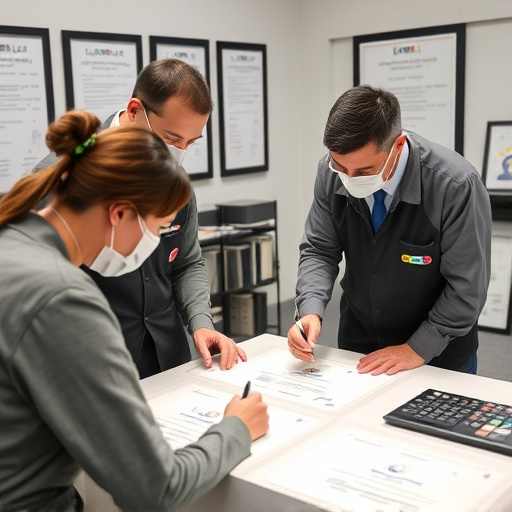Cold Air Intake (CAI) performance testing involves a meticulous scientific approach. Researchers compare standard setups with CAI-equipped vehicles using dynamic flow meters, pressure gauges, and thermometers in controlled tests. Data is collected under consistent conditions to ensure accuracy and repeatability. Analysis leverages statistical tools and graphical representations to identify trends and patterns, validating CAI efficiency through data-driven decisions. Advanced modeling predicts performance gains under diverse conditions, enabling informed adjustments to engine intake systems.
“Unleash optimal vehicle performance with a scientific approach to cold air intake (CAI) systems. This article guides you through the essential components of CAI performance testing methodology. From understanding the role and benefits of these systems to a detailed, step-by-step breakdown of the testing process, we delve into data analysis techniques that unlock valuable insights. Discover how to interpret results effectively, ensuring your vehicle’s engine breathes efficiently for enhanced power and fuel economy. Explore the scientific method behind CAI performance testing methodology.”
- Understanding Cold Air Intake Systems: Their Role and Benefits in Vehicle Performance
- The Scientific Method for Testing Cold Air Intake Performance: A Step-by-Step Guide
- Data Analysis and Interpretation: Unlocking Insights from Cold Air Intake Performance Testing Methodology
Understanding Cold Air Intake Systems: Their Role and Benefits in Vehicle Performance

Cold Air Intake (CAI) systems play a pivotal role in enhancing vehicle performance through efficient airflow management. Unlike standard intake systems that draw air from the engine bay, CAIs route cold, dense air from outside the vehicle, minimizing temperature rise and maximizing oxygen availability. This simple yet powerful modification improves combustion efficiency, leading to increased horsepower and torque output.
Testing the performance of CAI systems involves a meticulous scientific approach. Engineers utilize dynamic flow meters to measure air velocity and volume, ensuring optimal airflow into the engine. By comparing data from standard intake setups against CAI-equipped vehicles, researchers can quantify the benefits. This methodology includes controlled tests in varying atmospheric conditions, allowing for a comprehensive understanding of how temperature and pressure differences impact overall performance.
The Scientific Method for Testing Cold Air Intake Performance: A Step-by-Step Guide

When it comes to testing cold air intake (CAI) performance, a systematic approach based on the scientific method ensures accurate and reliable results. Here’s a step-by-step guide for CAI performance testing methodology:
1. Define the objective: Start by clearly defining what aspects of cold air intake performance you intend to measure, such as flow rate, pressure drop, or temperature reduction. This will guide your test procedures and data analysis.
2. Gather necessary equipment: Procure relevant instruments like a flow meter, pressure gauge, thermometer, and data logging software. Ensure all equipment is calibrated and in good working condition for accurate measurements.
3. Design the experimental setup: Create a controlled environment where you can isolate the CAI under test from external factors that could influence results. This might involve using a wind tunnel or a chamber designed to mimic engine compartment conditions.
4. Control variables: Identify and control all variables except the one being tested (the CAI). Stabilize environmental conditions like temperature, humidity, and air pressure to eliminate their impact on measurements.
5. Conduct tests: Install the CAI in the setup and perform tests under consistent conditions. Record data for each test run, ensuring measurements are accurate and repeatable. Compare these results against baseline performance without the CAI for significant difference identification.
6. Analyze data: Utilize data logging software to process collected information, generating graphs or charts where necessary. Evaluate the results based on your defined objectives and identify any patterns or trends that indicate CAI performance improvements or issues.
Data Analysis and Interpretation: Unlocking Insights from Cold Air Intake Performance Testing Methodology

Data Analysis and Interpretation play a pivotal role in understanding the insights derived from Cold Air Intake (CAI) performance testing methodology. This involves meticulous examination of collected data to identify trends, patterns, and anomalies that can significantly impact engine performance. Advanced statistical tools and graphical representations are employed to interpret results accurately.
By analyzing key metrics such as air flow rates, pressure differentials, and temperature variations, researchers and engineers can validate the efficiency of CAI modifications. This process helps in making data-driven decisions to optimize engine intake systems. Furthermore, advanced modeling techniques enable the prediction of performance gains under various operating conditions, ensuring that any adjustments are both informed and effective.
The scientific approach to testing cold air intake (CAI) systems offers a rigorous methodology for evaluating their performance and benefits in vehicle engines. By combining knowledge of CAI fundamentals with a structured testing process, as outlined in this article’s steps and data analysis techniques, researchers and mechanics can gain valuable insights into how these systems enhance engine performance. This comprehensive cold air intake performance testing methodology is key to unlocking the full potential of vehicle modifications, ensuring optimal power and efficiency gains.














